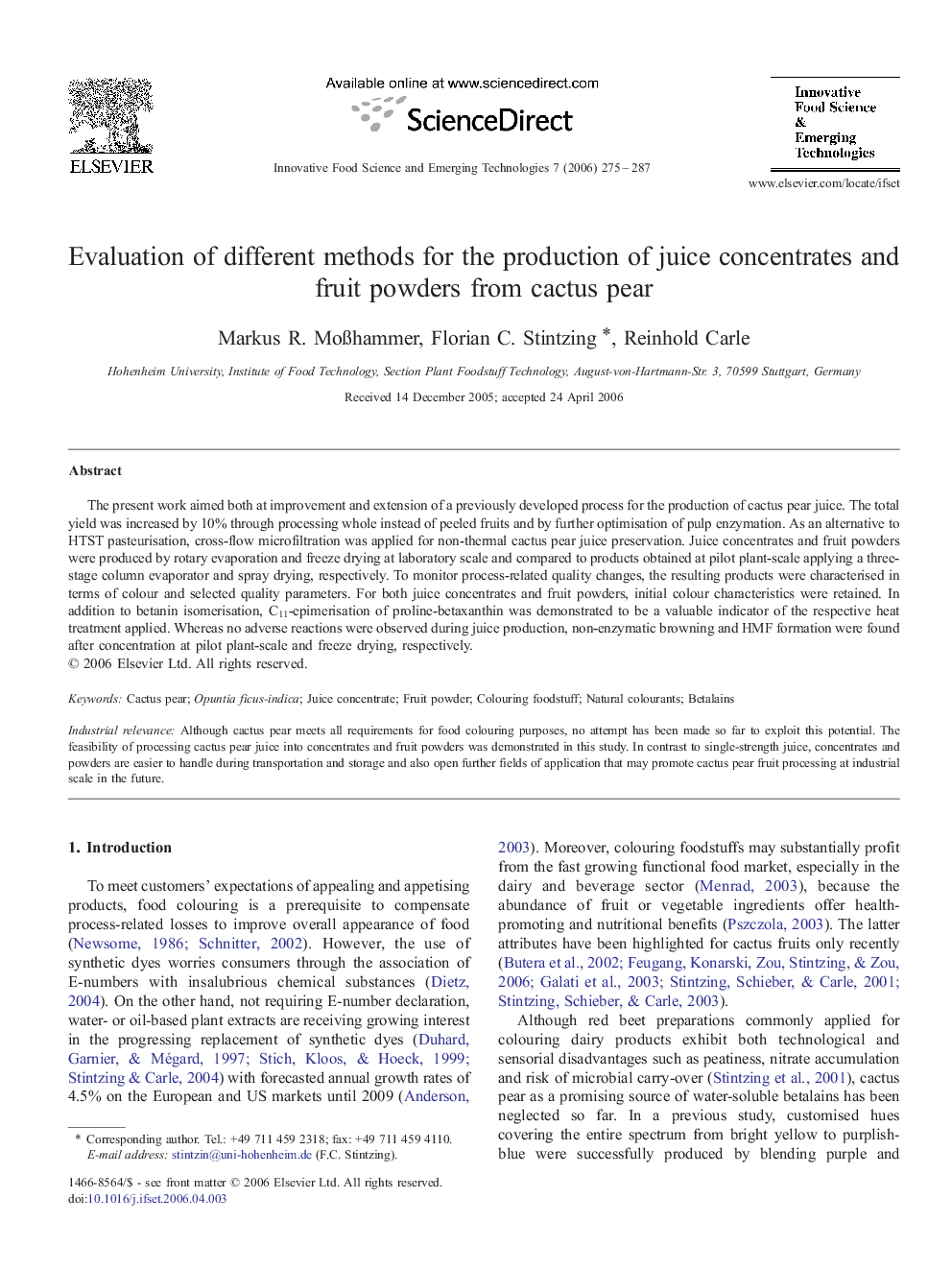| کد مقاله | کد نشریه | سال انتشار | مقاله انگلیسی | نسخه تمام متن |
|---|---|---|---|---|
| 2087325 | 1080638 | 2006 | 13 صفحه PDF | دانلود رایگان |

The present work aimed both at improvement and extension of a previously developed process for the production of cactus pear juice. The total yield was increased by 10% through processing whole instead of peeled fruits and by further optimisation of pulp enzymation. As an alternative to HTST pasteurisation, cross-flow microfiltration was applied for non-thermal cactus pear juice preservation. Juice concentrates and fruit powders were produced by rotary evaporation and freeze drying at laboratory scale and compared to products obtained at pilot plant-scale applying a three-stage column evaporator and spray drying, respectively. To monitor process-related quality changes, the resulting products were characterised in terms of colour and selected quality parameters. For both juice concentrates and fruit powders, initial colour characteristics were retained. In addition to betanin isomerisation, C11-epimerisation of proline-betaxanthin was demonstrated to be a valuable indicator of the respective heat treatment applied. Whereas no adverse reactions were observed during juice production, non-enzymatic browning and HMF formation were found after concentration at pilot plant-scale and freeze drying, respectively.Industrial relevanceAlthough cactus pear meets all requirements for food colouring purposes, no attempt has been made so far to exploit this potential. The feasibility of processing cactus pear juice into concentrates and fruit powders was demonstrated in this study. In contrast to single-strength juice, concentrates and powders are easier to handle during transportation and storage and also open further fields of application that may promote cactus pear fruit processing at industrial scale in the future.
Journal: Innovative Food Science & Emerging Technologies - Volume 7, Issue 4, December 2006, Pages 275–287